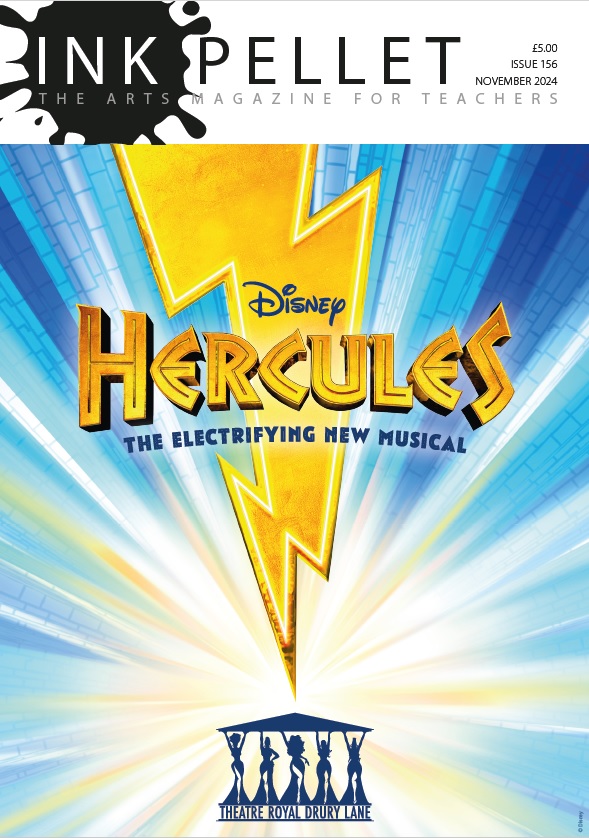If you think the Royal Opera House is all, and only, about toffs enjoying an abstruse art form in very expensive seats then you couldn’t be more wrong. Susan Elkin went along to Thurrock to find out more.
The company’s very active Learning and Participation team works very hard indeed to include and develop people of all ages. It runs, for instance a National Nutcracker project for primary schools, a fanfare composition competition for 11-18s and a 10 week project which enables schools to create their own versions of Carmen. There are schools matinees in Covent Garden through which 10,000 children and teenagers per year see a show for only £7.50 per ticket and the Design Challenge competition for secondary and FE students is well established.
There’s a great deal going on but the flagship project – the icing on the operatic cake, as it were – is ROH’s Trailblazers project.
Almost since the first stone was laid at what is now ROH’s High House Production Park close to the Dartford Crossing on the Essex side, there has been a strong commitment to working with London Borough of Thurrock to improve the cultural experience of its school/college students and local community. “The cultural take up in schools was well below the national average in this borough when we came here” says spokeswoman, Julia Easlea.
The Production Park – where ROH sets and costumes are made and many students and apprentices learn these crafts – officially opened in 2010. The Trailblazers project began four years ago. To date, it has worked with 43 of Thurrock’s 53 schools, around 30 each year.
“We ask the school to identify a need – a specific area in which they want to improve” says Gabrielle Forster-Still, ROH’s Head of Learning. “It could be that they want to be better at arts or, something more targeted such as wanting to deliver higher quality dance teaching. On the other hand it could be a generic need such as building up parental engagement, reducing bullying or raising the literacy levels of Key Stage 2 boys. It’s very varied.”
Then ROH, which links up with around 20 cultural partners including museums and heritage sites each year, works with the school to devise a programme. Students might visit, for example, heritage sites and art galleries. They could see live shows and hear live music. School staff, who get CPD as part of the programme, are given access to theatres, orchestras, professional writers, artists and choreographers.
Take Kenningtons Primary Academy at Aveley for example. It wanted to raise students’ aspirations by increasing and broadening their understanding of arts and culture thereby also building resilience.
For them the Trailblazers project involved their working with Historic Royal Palaces. The whole school studied The Young Victoria for a week and then each class set off with its own learning aim (such as improving writing) and chose an arts-based focus. Then they produced an outcome which they shared with the rest of the school community and parents.
The result of all this is that, among other things, 73% of Kenningtons children now take part in singing – up from 20% before. Parents are engaging with the school in greater numbers and more positively than previously and the quality of children’s work is generally higher. Moreover, the school has a much clearer understanding of how and where arts and culture needs to be developed and forward planning is being based on this.
Trailblazer schools, like Kenningtons, pay £400 per year plus £1.20 for every child on the school roll. The ROH reckons that this is about a seventh of the actual cost so this is a pretty good investment for schools. “Trailblazer offers excellent value for money” comments Steve Munday, Head Teacher at William Edwards School, Grays. “It is really important that schools make a financial commitment – you value the resource more if you have costed it thoughtfully.”
Each school is required to appoint two teachers as Cultural Champion and Deputy Cultural Champion to ensure that things really happen on the ground in the school. There also has to be senior leadership and governor support for Trailblazer.
“We’re reaching a total of between eight and eleven thousand young people every year with Trailblazer” says Gabrielle Forster-Still. “And they range from Key Stage One through to FE. Schools apply after Easter and we then refine what they’re looking for and negotiate with them so that by the end of the summer term there’s a fully costed, confirmed programme in place for the following academic year.”
There are no plans to roll this scheme out nationally. Forster-Still speaks warmly of ROH’s “special relationship with Thurrock”. On the other hand she stresses that ROH also runs a wide range of national programmes, some of which are initially piloted in Thurrock and that Trailblazers has influenced some of her department’s national planning.
So yes, the core work of the Royal Opera House obviously remains producing fine shows, some of which are costly to stage. But there’s nothing elitist or exclusive about a company which actively seeks and involves many thousands of young people and uses the arts to enhance their education, learning, enjoyment and development.



